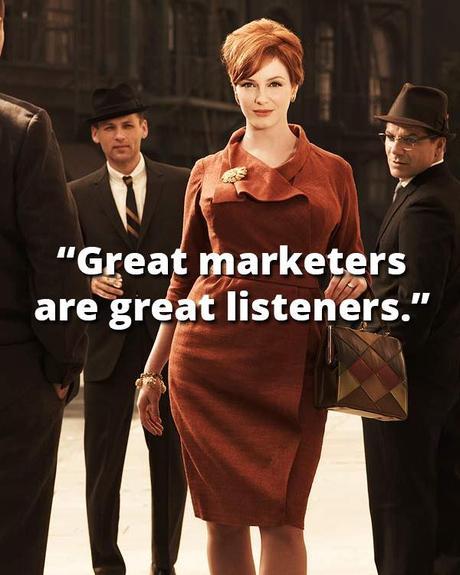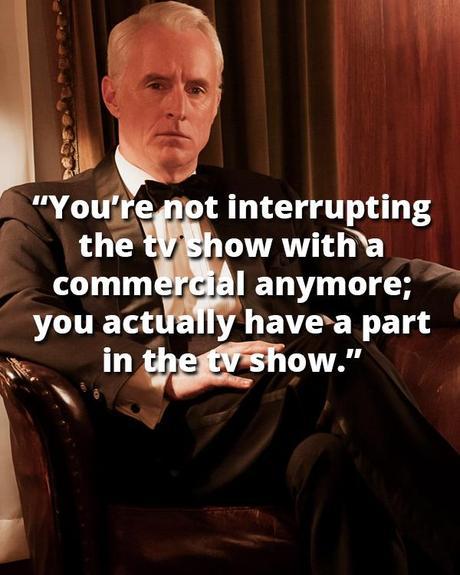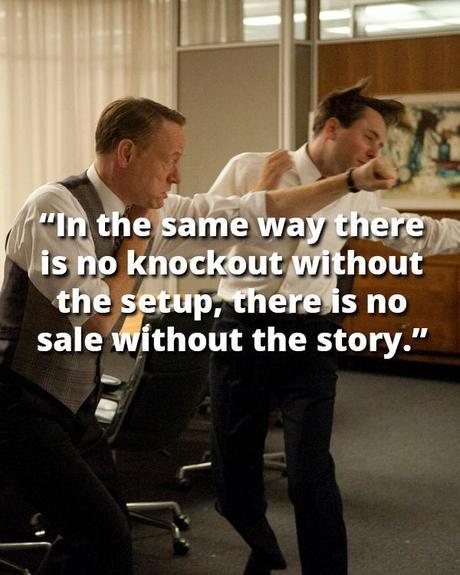After binge-watching season 6 of AMC’s Mad Men I’m curious how mid-century ad man Don Draper would react to our current social media milieu.
He’d probably be upset that our tactics are cheap. I don’t mean to sound harsh but these typically post-college 20-somethings running your favorite brand’s twitter can seriously underestimate your intelligence. At the very least, when ZzzQuil tweets “Today is the day for dreaming” on MLK Day I think we’re missing something.
He’d probably also be upset we’re not taking advantage of it. Opposite of these self-appointed social media “gurus” are little more than brand zombies. These are companies that only use social media to aggregate content (which is usually from their blog) but otherwise engage no one. The result is a very lonely newsfeed with little to no interaction from anybody.
So on one end of the spectrum we are pulling at every fringe opportunity to make an impression. On the other, we are virtually non-existent to anyone other than ourselves. Both are failed social media strategies and neither are helping you build your business.
Here’s the bottom line: omitting social media altogether is better than using it incorrectly. Every post, tweet, pin, snap, or share is a golden opportunity to be intelligent, empathetic, resourceful, or comedic. For what cost? A little creativity. But every misstep can disconnect you from your business and give the appearance that you are irrelevant.
At the cost of adding a formula to a formula-less platform, here are three goals your mortgage company should be aiming for in your social media strategy:


1. Content is King & Context is Queen.
In the marketing world, we have a saying that “content is king”. While this is irrevocably true, the context of your content can determine the height of it’s success.
There’s a scene in Mad Men that illustrates this point beautifully. An expensive Super Bowl campaign for headphones that included the phrase “lend me your ears” became distasteful after it was discovered that American G.I.s were cutting off the ears of their victims in the Vietnam War. The commercial by itself was a masterpiece but the context surrounding the events in 1967 shipwrecked the ad. Great content wasn’t enough; it had to be in the right context.
If lenders are to be successful in social media, they must have their finger on the pulse of the mortgage industry and pop-culture. As I write this, the CFPB has just released their RESPA/TILA Compliance Guide and #MarchMadness is trending. Unfortunately, none of the lenders I follow have had anything to say on either matter. What a loss! The context for some great content has been set, but few have responded.
Here’s a sad confession of mine: I discover what’s happening in the world by monitoring trends on twitter. As a marketer, however, part of understanding the context of my industry is listening to it. The same principle applies to you. Great marketers are great listeners. Invest the time to see what your followers are talking about and react by adding your opinion. You’re a wonderful resource, afterall!
2. Get Native
Social media is meant to be just that. Social. A conversation. But not all conversations are the same. You wouldn’t talk to your mother the way you talk to your buddies, would you? If so, shame on you.
In the same way, not all social networks are built the same. Some platforms are text-heavy, others are geared toward visuals. Speaking a network’s “native tongue” is the most foundational and basic concept in social media, and yet we miss it all the time.
This idea is best explained by Gary Vaynerchuk in his book “Jab, Jab, Jab, Right Hook”: “When native content is skillfully delivered, a person will consume it with the same interest as he would anyone else’s.” In other words, when content is delivered correctly, it is no longer received as an ad.
That’s the beauty behind social media, I think. You can become whatever experience people are looking for in a platform. It’s nimble enough to support that. You’re not interrupting the tv show with a commercial anymore; you actually have a part in the tv show.
So, how do you know what’s native to a platform? It takes a little bit more listening. It’s easy to see when something is not native. A book report on 140 character limit Twitter is certainly foreign to it’s platform. Twitter’s audience is generally urban, ironic and hashtag-saturated. A genuine post like “we love our customers” would be quickly dismissed. Likewise, a low-quality image would be disregarded on the glossy, pixel-heavy pinterest. There are many unspoken rules within each platform that requires some time to understand. I certainly couldn’t go into all of them here.


3. Jabs & Right Hooks
Taking another cue from Vaynerchuk (I strongly recommend you read his books), your social media strategy should be the same as a boxer. Not every punch a boxer throws is a knock out. A right hook is timed to land at exactly the right moment, just as the moment is opportune. Right hooks have to be positioned and jabs have to position them. Like boxers, marketers follow a pattern of Jab… Jab… Jab… Right Hook.
In our case, a right hook is a call to action; it’s the link to your website or the phone number to your sales team. A jab, however, is a light piece of micro-content that connects to your customers emotionally. They have to position your audience before making the sale. If you’ve followed the illustration, micro-content and community engagement have to outweigh the calls to action three-fold.
I often see lenders use social media as an opportunity to promote their business. It’s a constant supply of Right Hook… Right Hook… Right Hook… It could make anyone weary. Right hooks are your demands, but before anyone is willing to deliver you have to give.
Give… Give… Give… Ask. That’s a successful strategy.
The TV show “How I Met Your Mother” just ended. I know this because I came home to find my wife crying on the couch over it. Do you know what a good jab looks like? “Goodbye, HIMYM! Thank you for 7 great seasons”. In the same way there is no knockout without the setup, there is no sale without the story. Your next jab reads like a lighthearted joke: “I’m starting a spin off of HIMYM called How I Met Your Mortgage”.
Every marketers goal is to reach customers at the moment they’re influenced to buy. To do this, you need to know where they are. No matter where they are, you better show up with a killer strategy of jabs and right hooks to tell your story.
We have to stop thinking about social media as an extension of our blog or as a constant stream of call-to-actions. We have to become Mad Men, strategic in our planning and subtle in our execution. We have to connect to our audience emotionally and in a way that feels human. After all, content for the sake of content is pointless. In the words of Don Draper, “You are the product. You feeling something. That’s what sells.”
